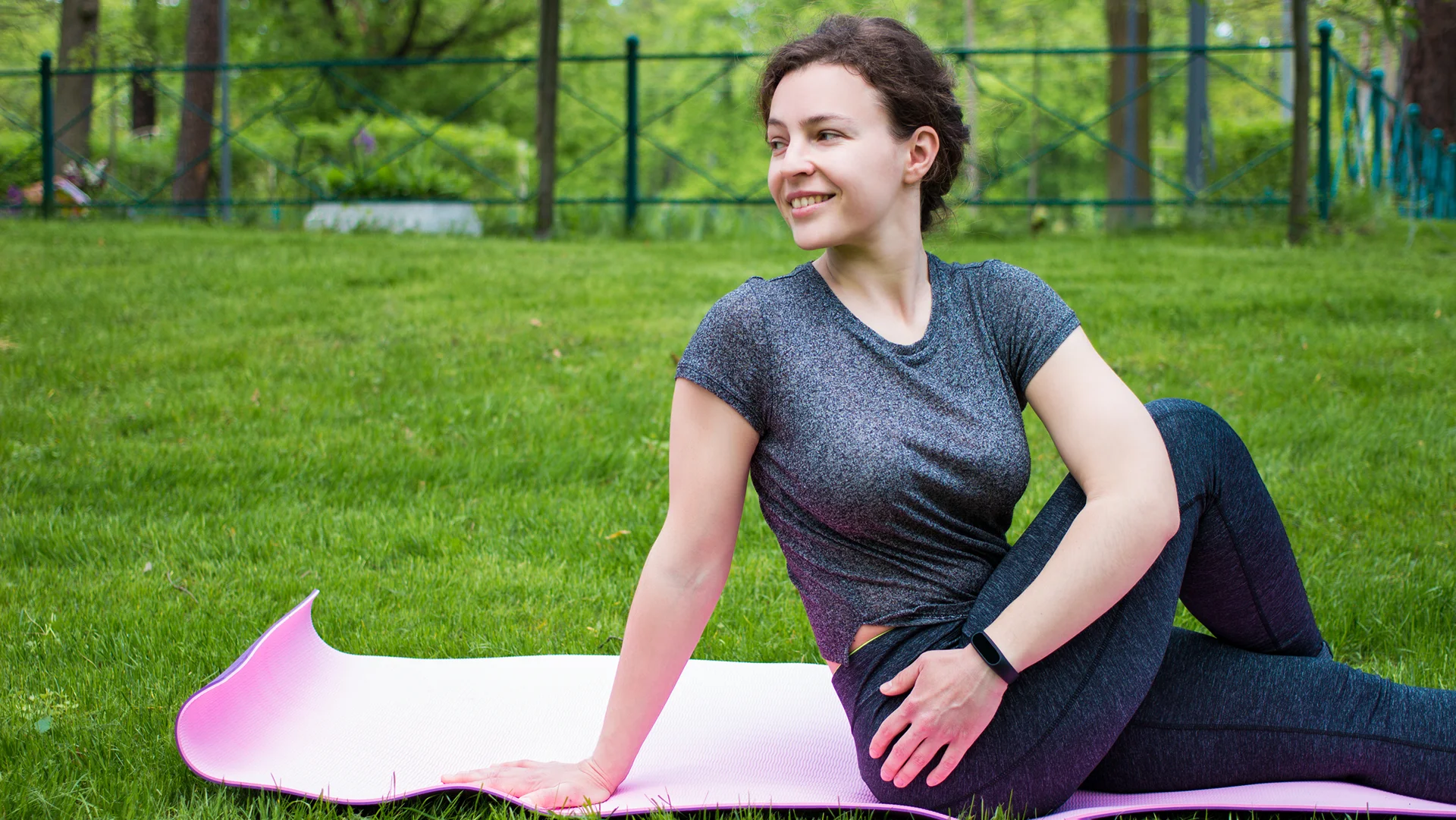Sciatica Pain? Fight Back with These Proven Exercises!
Sciatica is a common condition characterized by a sharp, tingling pain radiating down the leg.
It’s caused by compression or irritation of the sciatic nerve, the largest single nerve running from the lower back down through the hips and legs. Sciatica can lead to debilitating pain, numbness, and muscle weakness.
While medication and other treatments offer temporary relief, regular exercise provides long-term sciatica management. Stretching and strengthening exercises support the spine and pelvis to take pressure off the sciatic nerve.
They also reduce inflammation and improve circulation for natural pain relief. With consistency, targeted exercise can help reduce and control sciatic nerve pain.
What Are the Best Exercises for Relieving Sciatica Pain?

Certain exercises target the common muscular and postural imbalances that contribute to sciatica. It’s best to consult a physical therapist to design a customized program, but these are some of the most effective exercise types for sciatica:
Stretching Exercises
Gentle stretching can relieve the compression and irritation of the sciatic nerve by loosening the muscles of the hips, buttocks, and legs. Try these stretches:
- Seated hamstring stretch: Sit on the floor with legs extended. Bend one knee and place foot against inner thigh. Reach toward toes of straight leg until stretch is felt in the back of the thigh. Hold for 30 seconds. Repeat 2-3 times per leg.
- Piriformis stretch: Lie on back and cross one leg over the other at the knee. Pull legs gently toward chest until stretch is felt in buttock. Hold for 30 seconds. Repeat 2-3 times per side.
- Lower back rotations: Lie on back with knees bent and feet flat. Gently rotate knees from side to side to stretch lower back muscles. Do 10 rotations per side.
Strengthening Exercises
Targeted strength training supports the back, core muscles and glutes to take pressure off the sciatic nerve. Try:
- Bridges: Lie on back with knees bent. Lift hips off floor, engaging core and glutes. Hold for 5 seconds then lower. Repeat 10 times.
- Bird dogs: From hands and knees position, extend one arm forward and opposite leg back, keeping abdominals engaged. Hold for 5 seconds then switch sides. Repeat 5 times per side.
- Planks: Hold a pushup position, resting on forearms with a straight line from shoulders to feet. Engage core and hold for 30 seconds to 1 minute.
Low-Impact Cardio
Low-impact aerobic exercise increases circulation, improves flexibility, and releases natural pain-relieving endorphins. Recommended options include:
- Walking
- Stationary biking
- Swimming
- Water aerobics
- Elliptical machine
Aim for 30 minutes of gentle cardio most days of the week. Avoid high-impact activities like running.
Yoga and Pilates
Styles like yin yoga and Pilates contain modified stretches and poses to realign the body and take pressure off the sciatic nerve. Look for beginner classes focused on back and hip opening.
Make sure to avoid overstretching or straining through poses. Always listen to your body.
The key is to choose a well-balanced routine of stretches, strength training, and gentle cardio tailored to your abilities. As your pain improves, you can increase the duration and add more challenging options.
What Daily Activities and Lifestyle Changes Can Help Reduce Sciatica Pain?
Along with targeted exercise, making certain lifestyle adjustments can alleviate sciatica:
Maintain Proper Posture and Body Mechanics
Poor posture puts extra strain on the lower back and compresses the sciatic nerve. Be mindful of posture during daily activities:
- Sit and stand tall with shoulders back
- Avoid slouching and bending forward at the waist
- Use good body mechanics when picking things up – squat with a straight back
Make ergonomic adjustments like using a lumbar support cushion when sitting.
Lose Excess Weight
Extra body weight, especially around the midsection, can increase pressure on the sciatic nerve. Losing even 5-10% of body weight can make a difference. Focus on a healthy, anti-inflammatory diet and regular exercise.
Adjust Sleep Positions
Sleeping in certain positions can aggravate nerve pain. The best option is lying on your back with a pillow under your knees or sleeping on your side in the fetal position with a pillow between the knees. Avoid sleeping on the stomach.
Consider investing in a medium-firm mattress and lumbar support pillow to keep the spine aligned.
Manage Stress
Chronic stress causes muscle tension in the neck, shoulders, and back which can aggravate sciatica pain. Practice relaxation techniques like mindfulness meditation, gentle yoga, deep breathing, or visualization. Getting a massage can also relieve muscle tension.
Quit Smoking
Smoking impairs circulation, leading to nerve damage over time. Quitting can prevent further nerve irritation and improve sciatica symptoms.
Making lifestyle adjustments along with exercise is key to finding lasting relief from sciatica pain.
How Should You Modify Exercise with Sciatica?
It’s important to gradually ease into exercise to avoid flaring up your sciatica symptoms:
Consult a Physical Therapist
Seeing a physical therapist is recommended to evaluate your condition and design a customized exercise program tailored to your abilities and needs. They can ensure you have the right postural techniques and modify exercises appropriately.
Start Slowly
When beginning a new exercise routine, start with just 5-10 minutes a day and slowly increase duration week-by-week as able. Reduce weight amounts and reps initially when strength training. Proper pacing prevents overexertion.
Avoid High-Impact Movements
Choose low-impact activities like walking, swimming, or stretches over high-impact options like running or plyometrics. Any jarring or jerking motions can aggravate the inflamed nerve.
Focus on Proper Form
Maintaining proper form and control during exercises prevents strain and injury. Avoid movements that cause sharp sciatic pain. Posture should be upright but relaxed.
Take Regular Rest Days
Rest days give your muscles and nerves time to recover between exercise sessions. Listen to your body and take a break anytime sciatica pain flares up.
Stop Exercises That Aggravate Pain
With some careful planning and consistency, an exercise program can safely get your symptoms under control and restore mobility.
FAQs: Exercises for Sciatica
How does the sciatic nerve contribute to sciatica pain?
The sciatic nerve is the largest nerve in the body. When it’s irritated or compressed, often due to spinal stenosis or a bone spur, it can lead to sciatica pain. This pain typically radiates from the lower back to the buttocks and down the leg.
Are there specific sciatica exercises that can help alleviate this pain?
Yes, certain exercises target the root causes of sciatica pain. Pelvic tilts, leg circles, and modified plank are some examples. Incorporating gentle stretches, especially for the hamstring muscles, can provide relief.
What role do core muscles play in managing sciatica?
Strengthening core muscles supports the lumbar spine, reducing the strain on the sciatic nerve. Core-strengthening exercises, like the modified plank, can be particularly beneficial for those with sciatica symptoms.
Can regular exercise prevent sciatica pain?
Absolutely! Maintaining regular physical activity, especially exercises that enhance range of motion and strengthen the abdominal muscles, can prevent sciatica flare-ups and promote a healthy spine.
Should I consult a professional before starting exercises for sciatica?
It’s always wise to consult a healthcare professional before starting any exercise program, especially if you have a medical condition like sciatica. They can provide guidance on the safest positions and exercises tailored to your needs.
Conclusion
Stretches, core and back strengthening exercises and low-impact cardio are highly effective for managing and preventing sciatica flare-ups.
Complement your workouts with lifestyle adjustments like good posture, losing excess weight, and managing stress. Always consult a physical therapist or healthcare provider before starting any new exercise regimen.
The keys are tailoring your program to your abilities, pacing yourself, and exercising consistently over the long term. With the right exercise plan, most cases of sciatica can be improved and controlled successfully without drugs or surgery.
While it may take time and patience, you can reduce that shooting leg pain and start moving comfortably again. Use the recommendations in this guide to build an exercise routine that alleviates your sciatica symptoms and gets you back to daily activities pain-free.
Get Custom Sciatica Exercises – Ask Kaly Doctors

Struggling to find the right sciatica exercises? Connect with specialized providers on Kaly to receive customized exercise plans for pain relief.
Book same-day virtual consultations and get personalized recommendations from physical therapists, orthopedists, and more. Learn proper techniques during your appointment. Don’t struggle alone – get tailored sciatica exercises through Kaly’s platform.
